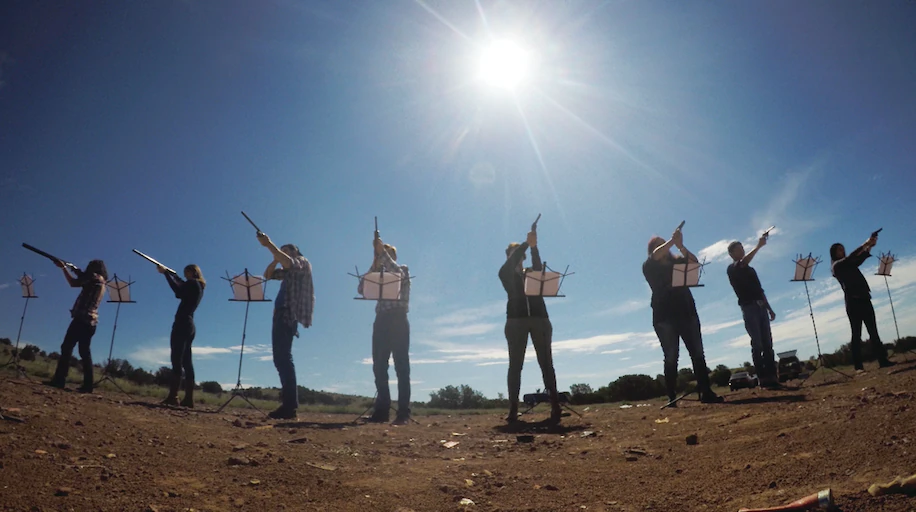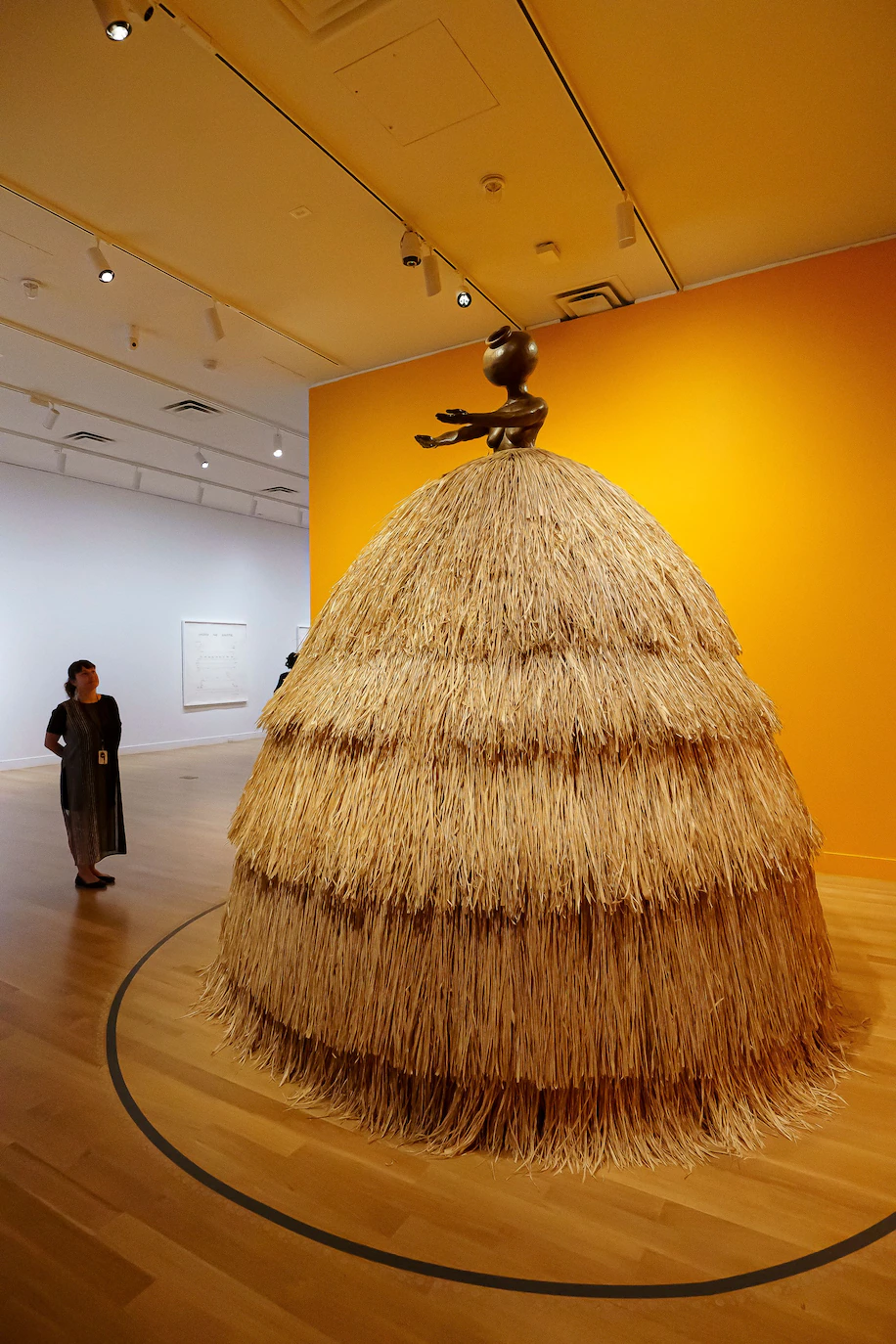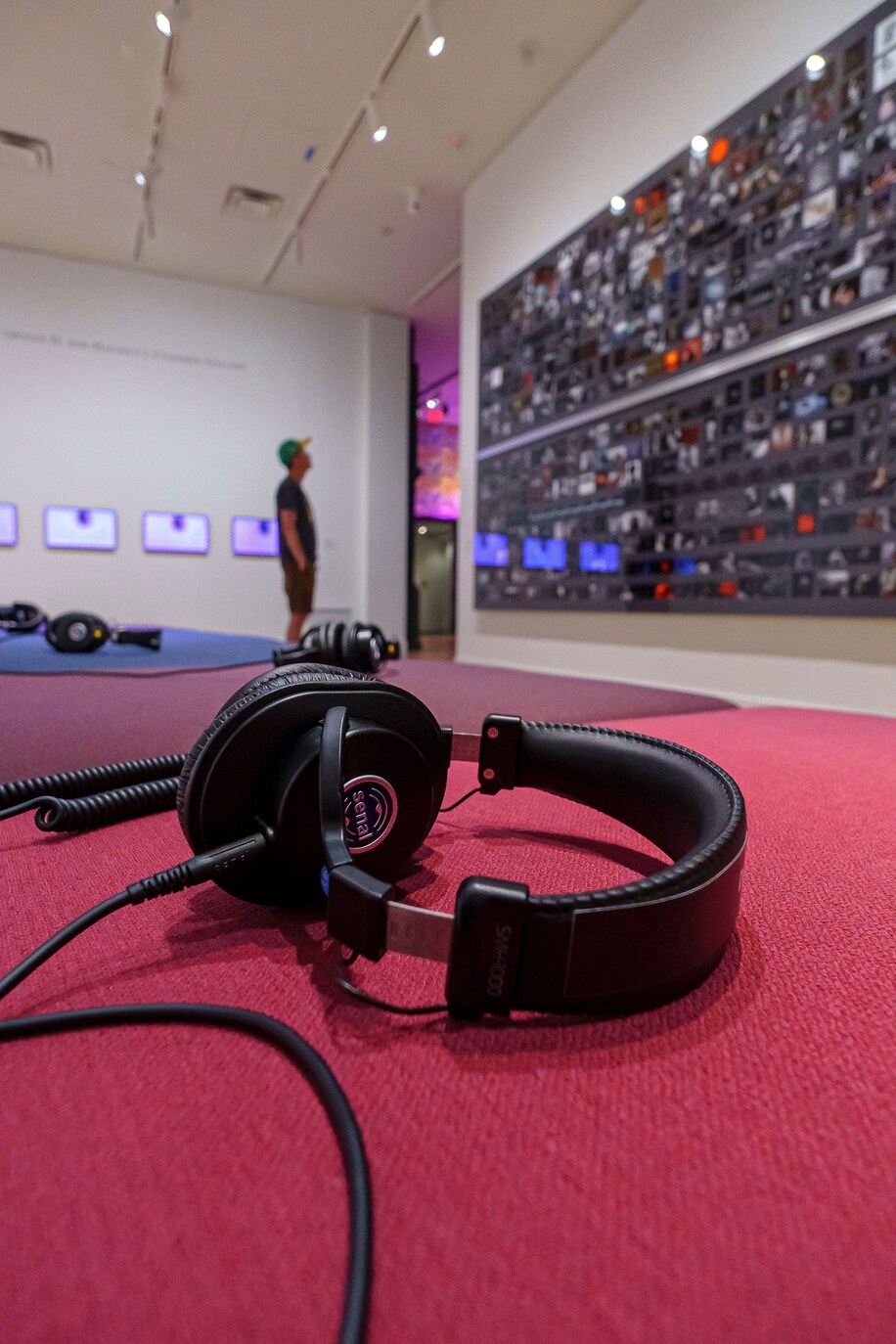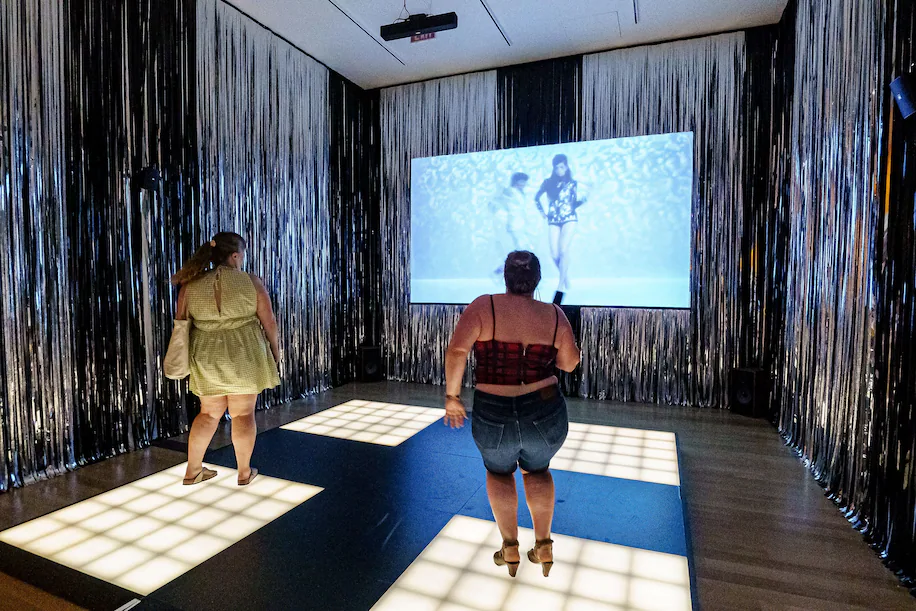
- Source: THE WASHINGTON POST
- Author: Kriston Capps
- Date: SEPTEMBER 11, 2023
- Format: DIGITAL
Maximalist survey of new video art puts you in an audiovisual groove
The Smithsonian American Art Museum’s ‘Musical Thinking: New Video Art and Sonic Strategies’ showcases works by 10 contemporary artists

Screenshot from “Report,” a video by Raven Chacon in “Musical Thinking: New Video Art and Sonic Strategies” at the Smithsonian American Art Museum. (SAAM purchase through the Luisita L. and Franz H. Denghausen Endowment)
Pistols and rifles in hand, the firing squad lines up in the desert scrub, exact location unclear. Eight figures fire their weapons, not in sequence but in cadence. They have no target but the dusty landscape. In front of each person is a stand with a musical score. This armed band is not training or enforcing, but performing.
“Report” (2001/2015) is a composition for an ensemble of mixed-caliber weapons, ranging from revolver to shotgun. It’s a remarkable early work by Raven Chacon, who first composed the piece as a student at the University of New Mexico. The Diné (Navajo) artist explores themes of identity, land ownership and state-sanctioned violence in a formally seamless work that also points to traditions of performance art, land art and even Dada absurdity.
Watching the video in a black box theater-style gallery at the Smithsonian American Art Museum feels like a revelation. The violence of the piece is jarring at first, but as the short composition plays out, its musical pulse rises to the fore. Despite their pearl-snap shirts and platter-size belt buckles, the performers are percussionists, not lawmen, a fact that is never stated outright but becomes clear through the rigor of the composition. Even as one of them reloads a shotgun, she could be a French horn player pausing to work a spit valve.
Just as “Report” desensitizes viewers to its own violence — a neat trick for a minimalist composition — it raises questions that linger long after the video ends. That’s the power of “Musical Thinking: New Video Art and Sonic Strategies,” a broad survey of new works that couple video with music on view at the museum. Video works by 10 contemporary artists cover a wide range of cinematic and sonic ground, while orbiting an accessible if sometimes limiting theme of American identity.

“Cupboard VIII” by Simone Leigh. (Albert Ting)

Installation view of “Musical Thinking” at the Smithsonian American Art Museum. (Albert Ting)
The exhibition begins, oddly enough, with a sculpture: Simone Leigh’s “Cupboard VIII” (2018), a small glazed stoneware figure atop a dried raffia-leaf hoop skirt the size of a shed, greets viewers on the museum’s third floor. Museums can’t get enough of Leigh since her critically acclaimed appearance at the U.S. pavilion in last year’s global Venice Biennale. The piece isn’t a fit here, although it certainly doesn’t hurt. In a sense, “Cupboard” indicates one of the challenges of putting on a show like this: How do you mount a video show that’s more inviting than a bunch of screens and headphones?
Saisha Grayson, the museum’s curator of time-based media — think video, but hardly just video — has squared this circle with a maximalist strategy. Several pieces such as “Report” get their own dedicated theaters (and “Report” specifically includes a music stand with a copy of the score). But other works are arranged together in the museum’s central corridor, their scores clashing in a haphazard cacophony.
The driving beat of Martine Gutierrez’s “Clubbing” (2012) can be heard from nearly any point in the show (possibly anywhere on the third floor). The piece is a dance-floor installation with a video of Gutierrez — several Gutierrezes — dancing to a chintzy disco tune. The figures Gutierrez plays are coded as both men and women, wearing huge painted-on eyes and dressed in 1960s mod outfits. And they are here to dance. It’s a succinct and inviting demonstration that gender can be as fluid as the scene at the discothèque. The sculptural dance-floor element invites viewers to join her nonbinary-transgender drag party of one.

Installation view of Martine Gutierrez’s “Clubbing.” (Albert Ting)
“Clubbing” is so infectious, in fact, that it’s hard to concentrate on subtler works in the same room. The quietest piece in “Musical Thinking” is Christine Sun Kim’s “One Week of Lullabies for Roux” (2018), a benchlike installation with seven stations for listening to sound pieces. Kim, who is deaf, invited friends (and fellow parents) to design lullabies for her newborn daughter, Roux. She set a rule that these pieces contain no lyrics and highlight lower frequencies, so she could monitor them. Even with noise-canceling headphones, it was hard to get into the mind-set to indulge in these compositions, with “Clubbing” throbbing overhead.
Even so, including Kim’s lullaby challenge is a smart strategy. Grayson has essentially embedded a mini-curated sound show within her own, and it’s a clever one. While most of Kim’s correspondents gave her abstract or nature scores, one group (Sonja Simonyi, Nico Van Tomme and Niels Van Tomme) responded to her prompt with a track of loud snoring. It’s a project that invites and deserves deeper exploration — the kind of setting that a museum must strive for even if it can’t always deliver.
Deciding on the physical installation of a time-based media show involves a lot of trade-offs, and Grayson’s presentation mostly comes out on top. “Musical Thinking” also puts a thumb on the scale in favor of accessibility over radical form. Works in the show will be very familiar to people who spend a lot of time at museums. Arthur Jafa’s “Love Is the Message, the Message Is Death” (2016) — a vital music video that comprises scenes of Black beauty and brilliance from across American culture and history — has become so ubiquitous that in 2020, at the height of Black anti-brutality protests, museums across the nation streamed the piece online for 48 hours. Its inclusion in this show will no doubt be an eye-opener for Smithsonian viewers and, for some of them, a soothing balm. But at the same time, “Love Is the Message” feels decidedly of a moment, and not just because of the “Ultralight Beam” soundtrack by the increasingly erratic Ye, formerly known as Kanye West.
The great triumph of “Musical Thinking” is to effortlessly expand the canon of artists prized for their experiments in new media without making that project academic or didactic. New media has always been one of the American Art Museum’s strengths: John Hanhardt, a former curator for media arts, was a scholar of the visionary television artist Nam June Paik, and Hanhardt gave rich lectures at SAAM tracing the history of experimentation in video art to the early broadcast work of absurdist comedian Ernie Kovacs. Grayson takes up that baton and runs with it. Cauleen Smith’s “Sojourner” (2018), an evocative and deeply layered tribute to the work of musician and spiritualist Alice Coltrane Turiyasangitananda and sculptor Noah Purifoy, expands that big tent of American art to include radical Black pioneers who worked at the bleeding edge.
The most musical piece in “Musical Thinking” doesn’t feature any sound at all. Smith’s “Sunshine (for Brayla, Merci, Shakiie, Draya, Tatiana, and Bree, Riah, Dominique …)” (2020) is a neon installation of the words from the chorus to “Everybody Loves the Sunshine” by Roy Ayers Ubiquity. With its hypnotic funk and minor piano trills, this soul track speaks to the very hottest of summer days. Ayers’s innovative use of a drone synth note to give the song its foundation is a formal innovation that still drives music nerds today. And art lovers, too: Smith’s neon sign lights up in a sequence that imitates Ayers’s unmistakable rhythm, a perfect tribute. To see the one piece is to hear the other — and to feel in sync, aligned in an audiovisual groove.

